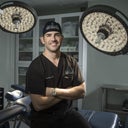Thank you for your question pepita84. I understand your concern. Botox is a purified protein

